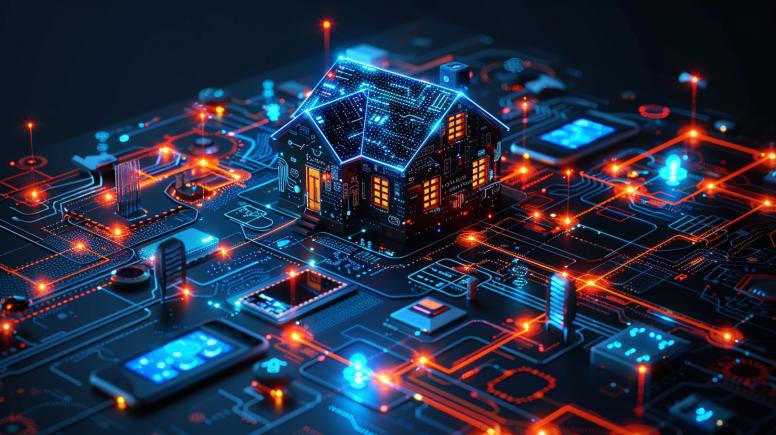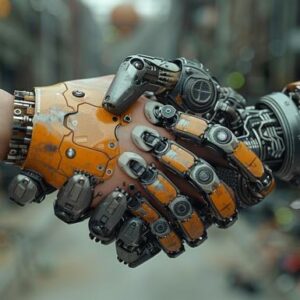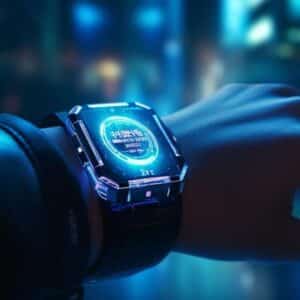Have you ever imagined your coffee maker talking to your alarm clock to prepare your coffee at the exact time you wake up? This scenario is not science fiction, it is the reality that the Internet of Things (IoT) is building around the globe. In the interconnected universe of IoT, devices communicate with each other, narrowing our world and expanding possibilities. Discover how this complex network works and the wireless innovations that enable a smarter, more integrated everyday life. What are the opportunities and impacts of this revolution? Navigate with us through the nuances of IoT and how it intertwines with trends like 5G and artificial intelligence, transforming the way we live, work and relate.
What is the Internet of Things (IoT) and how does it work?
The Internet of Things, or IoT, is a network that enables the connection of physical objects with technology to interact and exchange data over the internet. She uses fundamental technologies, such as sensors and wireless connection, to connect devices worldwide. IoT not only allows home appliances and machines to communicate with each other, but also integrates with other technological trends such as 5G and AI, expanding its possible applications and impacts on everyday life.
What are real examples of the application of IoT in everyday life?
Practical IoT applications are transforming our homes with innovative solutions like smart homes. In this environment, interconnected devices allow remote control of thermostat systems, security cameras and lighting, resulting in optimized energy use and increased security. You can learn more about these transformations on CNN Brasil.
IoT also proves to be indispensable for health and well-being, monitoring vital signs and personalizing the care experience. In cities, sensing, data analytics and connectivity are creating smarter, more efficient communities, where everything from traffic management to environmental monitoring is becoming more integrated and responsive.
What benefits and impacts does IoT have on industries?
The Internet of Things (IoT) in Industry 4.0 is redefining the way industries operate. It's about connecting machines, products and systems to create intelligent and autonomous processes. But how exactly does this transform industries?
The implementation of IoT enables unprecedented energy efficiency by monitoring and adapting energy consumption in real time. When it comes to asset management and logistics, IoT plays a vital role, enabling traceability and predictive maintenance, which reduces costs and increases machine availability.
The impact of IoT on industries is significant, leading to productivity, sustainability and innovation. Through access to real-time data and the interconnection of systems, IoT is paving the way for a new industrial era.
How does IoT influence data management and security?
Security challenges facing IoT include device vulnerabilities, insecure networking, and data management issues. To overcome them, it is essential to implement robust IoT security measures, such as encryption, authentication and constant security updates. Data privacy is another critical issue, as there is a need to balance collecting data for valuable insights with protecting users' personal information. IoT can collaborate with big data to provide these insights, but this must be done while ensuring that privacy is not compromised.
What future trends can we expect for IoT?
The future of IoT promises exponential growth, especially when combined with artificial intelligence. This intertwining is expected to generate not only more autonomous and efficient devices but also systems capable of learning and adapting in innovative ways. In urban mobility and environmental sustainability, IoT can be fundamental in solutions such as smart traffic, resource management and adaptive infrastructure, effectively contributing to more sustainable and liveable cities.
How can consumers benefit from IoT and what are the considerations for adoption?
What IoT devices are available to consumers and how do they improve the user experience? Consumer IoT devices include smart thermostats, security cameras, and wearable tech, which offer remote management, energy savings, and enhanced security. The Internet of Things welcomes the user into a more intelligent and connected ecosystem.
How is IoT transforming the shopping experience and retail? IoT reshapes retail with personalized shopping experiences and inventory optimization, offering convenience and efficiency for consumers and retailers.
How is IoT used to improve municipal services and environmental management?
A IoT in waste management How are you helping? Equipping trash cans with sensors that signal when they are full. This smart approach optimizes collection routes and reduces unnecessary frequency, resulting in cleaner cities. About IoT in agriculture, soil moisture sensors and drones enabled what? More precise irrigation and aerial monitoring of plantations, thus improving water efficiency and crop productivity. For a deeper dive into the subject, visit What is the Internet of Things and how it is changing the world.
In this article, we explore the universe of the Internet of Things (IoT) and how this technology is connecting devices around the world, bringing innovations from smart homes to environmental management. By analyzing concrete examples, we discuss benefits such as energy efficiency in industries and improvements in municipal services. We also reflect on the security and privacy challenges posed by the intricate data handling that IoT requires. Looking to the horizon, the possible synergies between IoT and artificial intelligence promise a future of unlimited opportunities, always with attention to the consumer experience and environmental sustainability. IoT is not just a technical revolution, it is a bridge to a more connected and intelligent future, where every object has the potential to improve the way we live.
FAQ about Blog Post: Internet of Things (IoT)
1. What is the Internet of Things (IoT) and how does it integrate with other technological trends?
The Internet of Things, or IoT, is a network that enables the connection of physical objects with technology, allowing interaction and data exchange over the internet. It integrates with trends such as 5G and AI, expanding its applications and impacting everyday life.
2. What are some practical examples of how IoT is present in people's daily lives?
Practical examples of IoT in everyday life include smart homes with remote control of thermostats and security cameras, as well as monitoring vital signs for health and well-being and use in cities for traffic management and environmental monitoring.
3. What benefits does IoT bring to industries and how does it redefine industrial processes?
IoT promotes energy efficiency, traceability and predictive maintenance in industries, creating intelligent and autonomous processes that increase productivity, sustainability and innovation.
4. What security challenges does IoT face and how can they be overcome?
IoT faces challenges such as device vulnerabilities and data management, which can be overcome with robust security measures, including encryption, authentication and constant security updates to protect users' data privacy.
5. What future trends can be expected for IoT and its impact on cities and the environment?
IoT is expected to grow exponentially and combine with artificial intelligence, which should generate more autonomous devices and adaptive systems, contributing to solutions in urban mobility, resource management and environmental sustainability.







